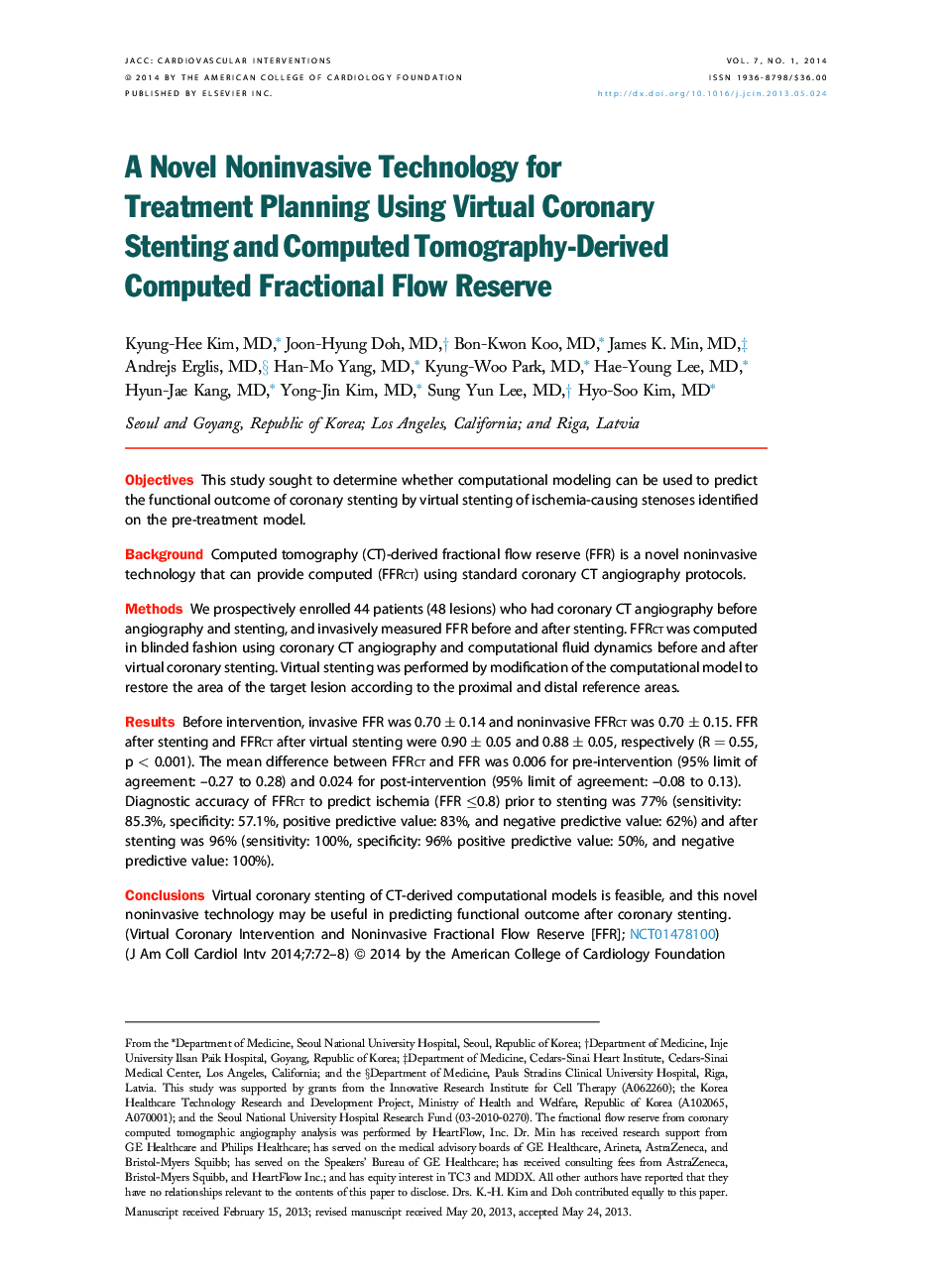| Article ID | Journal | Published Year | Pages | File Type |
|---|---|---|---|---|
| 2941085 | JACC: Cardiovascular Interventions | 2014 | 7 Pages |
ObjectivesThis study sought to determine whether computational modeling can be used to predict the functional outcome of coronary stenting by virtual stenting of ischemia-causing stenoses identified on the pre-treatment model.BackgroundComputed tomography (CT)-derived fractional flow reserve (FFR) is a novel noninvasive technology that can provide computed (FFRct) using standard coronary CT angiography protocols.MethodsWe prospectively enrolled 44 patients (48 lesions) who had coronary CT angiography before angiography and stenting, and invasively measured FFR before and after stenting. FFRct was computed in blinded fashion using coronary CT angiography and computational fluid dynamics before and after virtual coronary stenting. Virtual stenting was performed by modification of the computational model to restore the area of the target lesion according to the proximal and distal reference areas.ResultsBefore intervention, invasive FFR was 0.70 ± 0.14 and noninvasive FFRct was 0.70 ± 0.15. FFR after stenting and FFRct after virtual stenting were 0.90 ± 0.05 and 0.88 ± 0.05, respectively (R = 0.55, p < 0.001). The mean difference between FFRct and FFR was 0.006 for pre-intervention (95% limit of agreement: –0.27 to 0.28) and 0.024 for post-intervention (95% limit of agreement: –0.08 to 0.13). Diagnostic accuracy of FFRct to predict ischemia (FFR ≤0.8) prior to stenting was 77% (sensitivity: 85.3%, specificity: 57.1%, positive predictive value: 83%, and negative predictive value: 62%) and after stenting was 96% (sensitivity: 100%, specificity: 96% positive predictive value: 50%, and negative predictive value: 100%).ConclusionsVirtual coronary stenting of CT-derived computational models is feasible, and this novel noninvasive technology may be useful in predicting functional outcome after coronary stenting. (Virtual Coronary Intervention and Noninvasive Fractional Flow Reserve [FFR]; NCT01478100)
